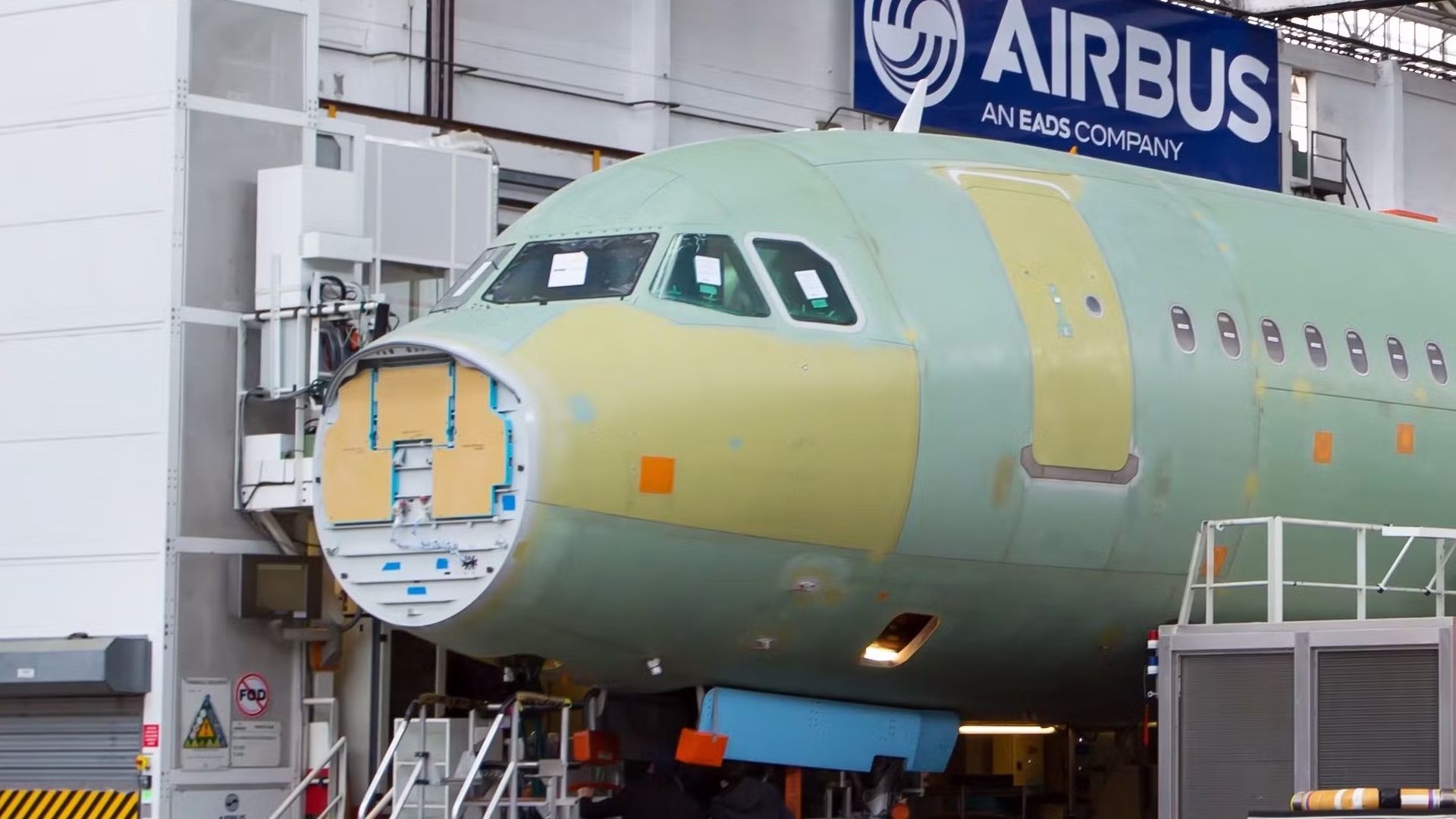Business
Airbus Expands China Operations with New Assembly Line in Tianjin

Airbus has officially inaugurated a second final assembly line for the Airbus A320-family in Tianjin, China. This significant move follows the recent opening of a new assembly line in Mobile, Alabama, and aims to increase the output of the Airbus A320neo family to a target of 75 jets per month by 2027.
The decision to expand in China underscores Airbus’s strategy to balance its operations amid ongoing trade tensions between the United States and China. While the company relies heavily on suppliers based in the US, it must also cater to a growing customer base in China, which is now Airbus’s largest individual market, with over 2,200 aircraft currently in service.
A Strategic Expansion in a Key Market
The opening of the Tianjin assembly line represents a crucial step in Airbus’s efforts to streamline production and enhance its capacity in the narrowbody aircraft segment. The new facility, which held a low-key inauguration ceremony, is part of a broader strategy to position production closer to key markets, thereby improving delivery times and operational efficiency.
According to reports, this assembly line expansion coincides with ongoing negotiations for what could be a substantial order from China, speculated to involve 500 jets. While not all details of this potential deal have been disclosed, the expectation is that some elements will be announced soon.
In terms of operational strategy, Airbus is tightening its grip on the narrowbody market cycle. By increasing capacity near significant end markets, the company can better manage delivery slots where demand is strongest—namely in North America and China. This approach not only mitigates geopolitical risks but also enhances the company’s bargaining power with airlines and suppliers.
Financial Implications and Future Outlook
From a financial perspective, the immediate impact of this expansion may present mixed outcomes. Analysts point to potential inefficiencies and synchronization costs associated with ramping up production, which could initially pressure Airbus’s margins and working capital. However, as production stabilizes, the company anticipates improved cost absorption and a more favorable cash flow situation in the long term.
Airbus’s ability to convert incremental A320neo deliveries into revenue will also be crucial. The proximity to customers in China is expected to reduce logistical challenges, supporting pricing discipline in a competitive market. As the company navigates these complexities, it remains committed to meeting the increasing demand for its aircraft models, particularly the A320neo, which is recognized for its operational and financial performance, as well as passenger comfort.
In conclusion, the establishment of a second assembly line in Tianjin not only reinforces Airbus’s commitment to the East Asian market but also positions the company to capitalize on emerging opportunities in a rapidly evolving aviation landscape. This expansion highlights Airbus’s proactive approach in addressing the growing demand for its best-selling narrowbody family while managing its global supply chain dynamics.
-

 Health3 months ago
Health3 months agoNeurologist Warns Excessive Use of Supplements Can Harm Brain
-

 Health3 months ago
Health3 months agoFiona Phillips’ Husband Shares Heartfelt Update on Her Alzheimer’s Journey
-

 Science2 months ago
Science2 months agoBrian Cox Addresses Claims of Alien Probe in 3I/ATLAS Discovery
-

 Science2 months ago
Science2 months agoNASA Investigates Unusual Comet 3I/ATLAS; New Findings Emerge
-

 Science1 month ago
Science1 month agoScientists Examine 3I/ATLAS: Alien Artifact or Cosmic Oddity?
-

 Entertainment5 months ago
Entertainment5 months agoKerry Katona Discusses Future Baby Plans and Brian McFadden’s Wedding
-

 Science1 month ago
Science1 month agoNASA Investigates Speedy Object 3I/ATLAS, Sparking Speculation
-

 Entertainment4 months ago
Entertainment4 months agoEmmerdale Faces Tension as Dylan and April’s Lives Hang in the Balance
-

 World3 months ago
World3 months agoCole Palmer’s Cryptic Message to Kobbie Mainoo Following Loan Talks
-

 Science1 month ago
Science1 month agoNASA Scientists Explore Origins of 3I/ATLAS, a Fast-Moving Visitor
-

 Entertainment2 months ago
Entertainment2 months agoLewis Cope Addresses Accusations of Dance Training Advantage
-

 Entertainment3 months ago
Entertainment3 months agoMajor Cast Changes at Coronation Street: Exits and Returns in 2025









